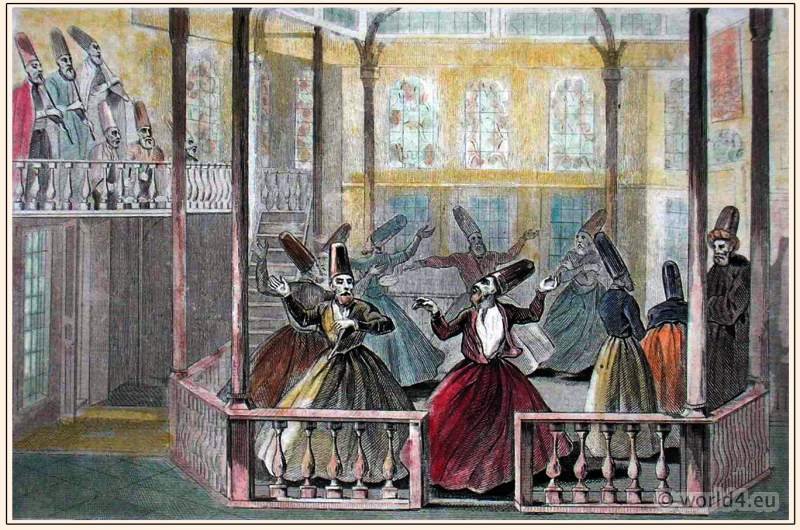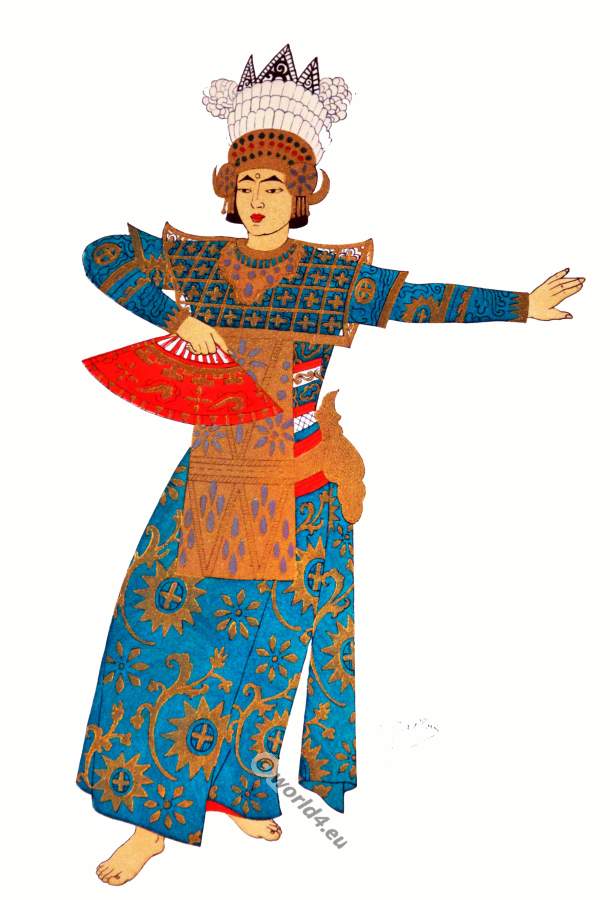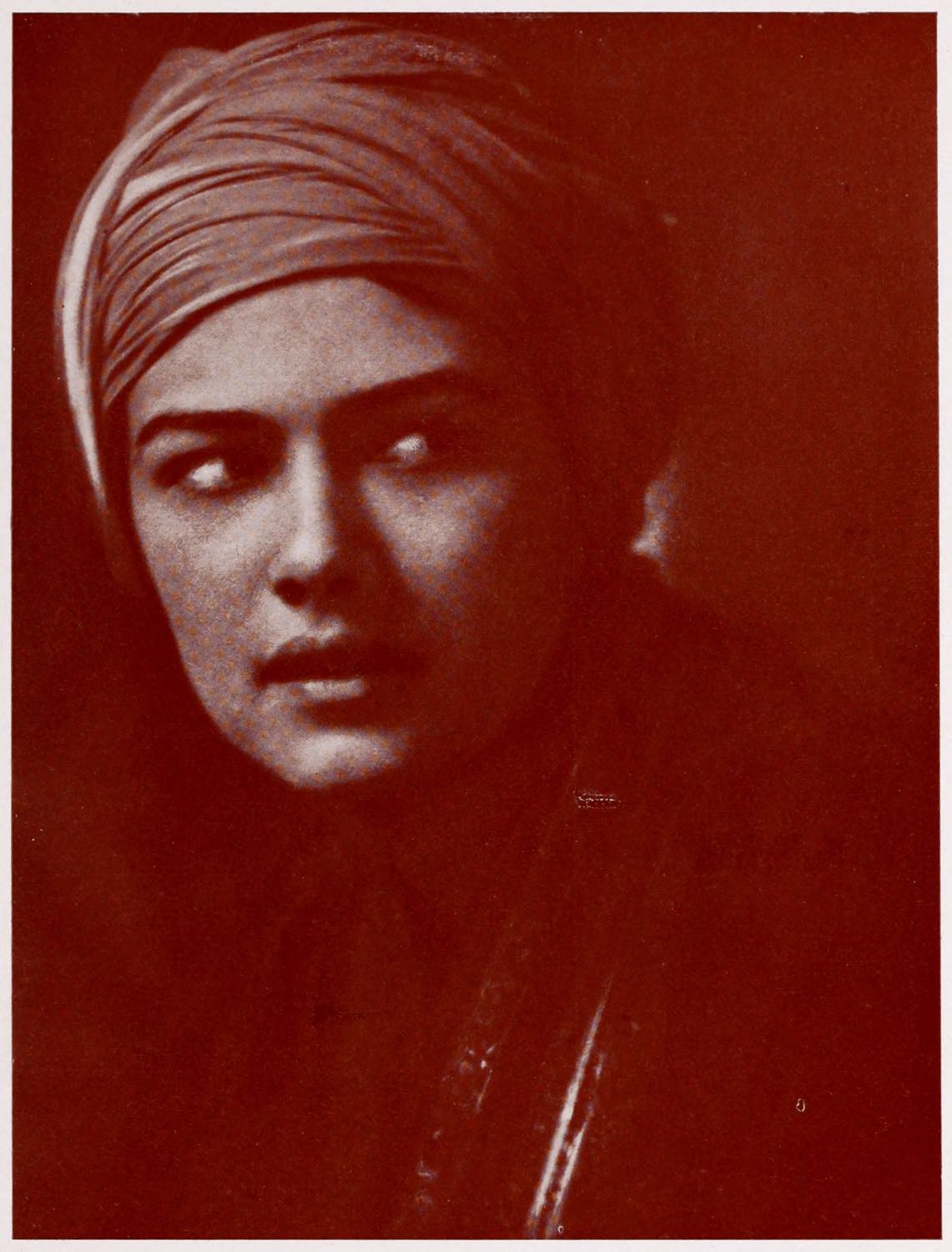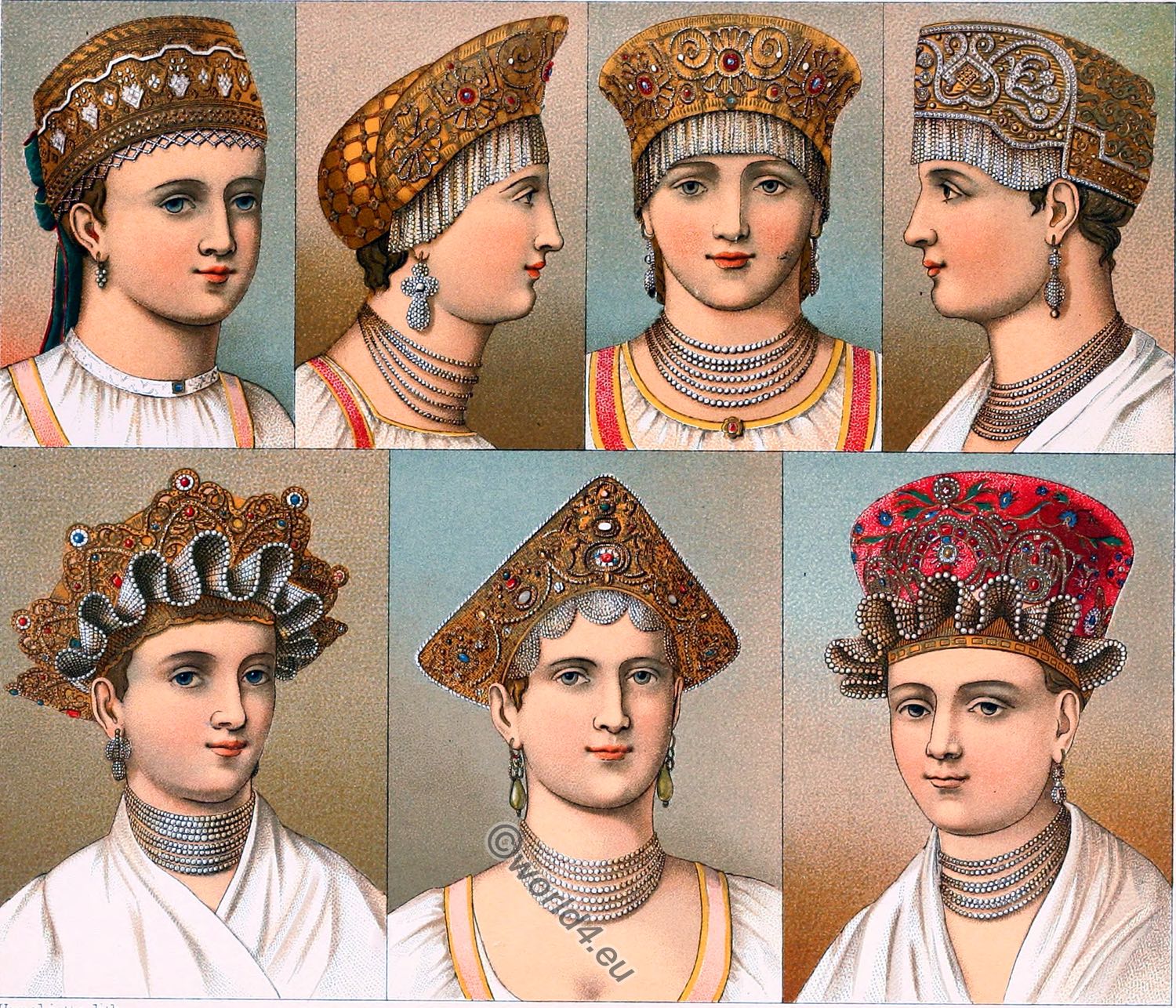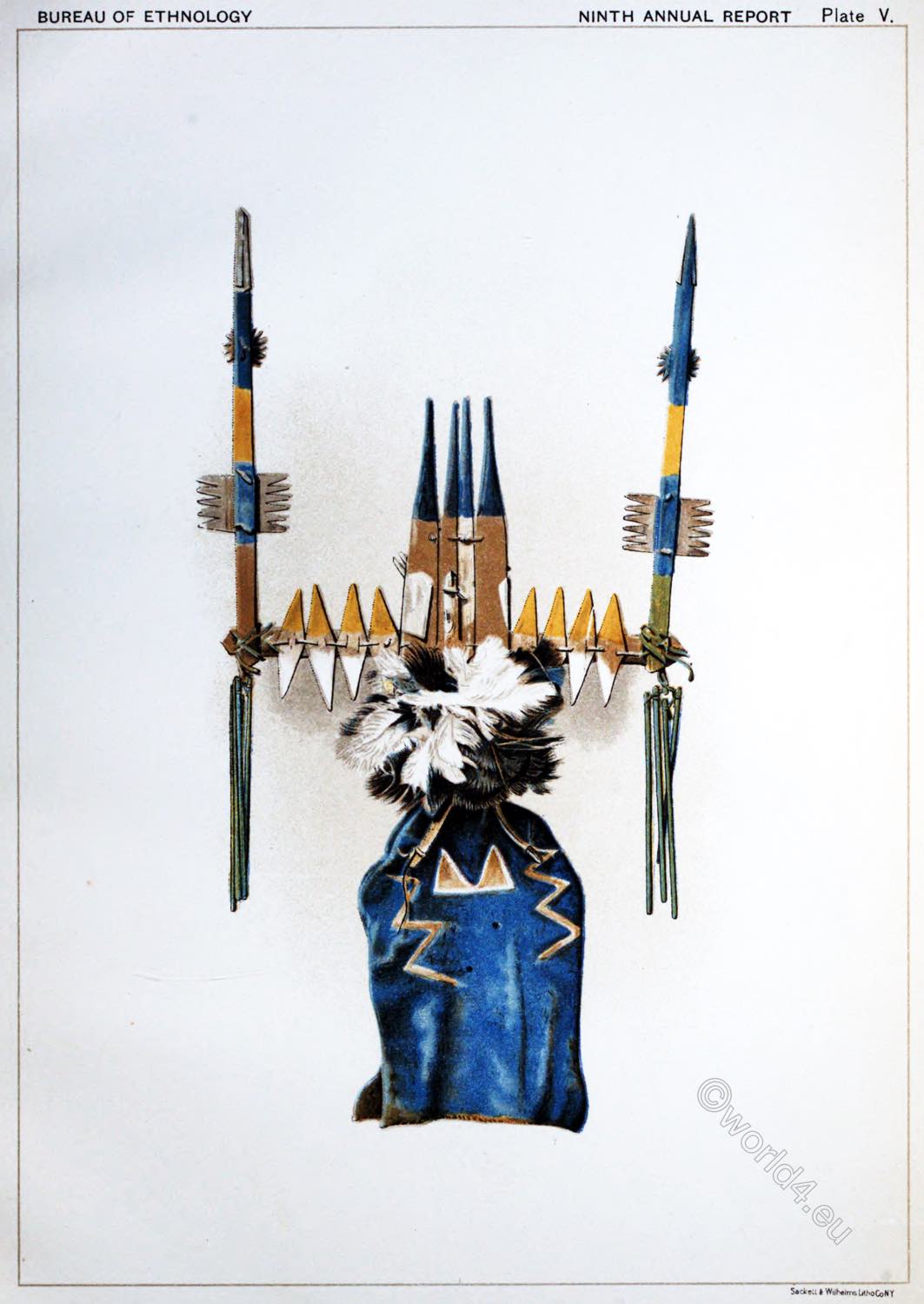
The Medicine-men of the Apache.
APACHE MEDICINE HAT USED IN GHOST DANCE.
BUREAU OF ETHNOLOGY
Plate V.
THE SPIRIT OR GHOST DANCE HEADDRESS OF THE APACHE.
As the volume of music swelled and the cries of the on-lookers became fiercer, the dancers were encouraged to the enthusiasm of frenzy. They darted about the circle, going through the motions of looking for an enemy, all the while muttering, mumbling, and singing, jumping, swaying, and whirling like the dancing Dervishes of Arabia.
Their actions, at times, bore a very considerable resemblance to the movements of the Zuni Shálako at the Feast of Fire. Klashidn told me that the orchestra was singing to the four willow branches planted near them. This would indicate a vestige of tree worship, such as is to be noticed also at the sun dance of the Sioux.
At intervals, the three dancers would dart out of the ring and disappear in the darkness, to consult with the spirits or with other medicine men seated a considerable distance from the throng. Three several times they appeared and disappeared, always dancing, running, and whirling about with increased energy.
Having attained the degree of mental or spiritual exaltation necessary for communion with the spirits, they took their departure and kept away for at least half all hour, the orchestra during their absence rendering a mournful refrain monotonous as a funeral dirge.
My patience became exhausted and I turned to go to my quarters. A thrill of excited expectancy ran through the throng of Indians, and I saw that they were looking anxiously at the returning medicine men. All the orchestra now stood up, their leader (the principal medicine-man) slightly in advance, holding a branch of cedar in his left hand. The first advanced and bending low his head murmured some words of unknown import with which the chief seemed to be greatly pleased.
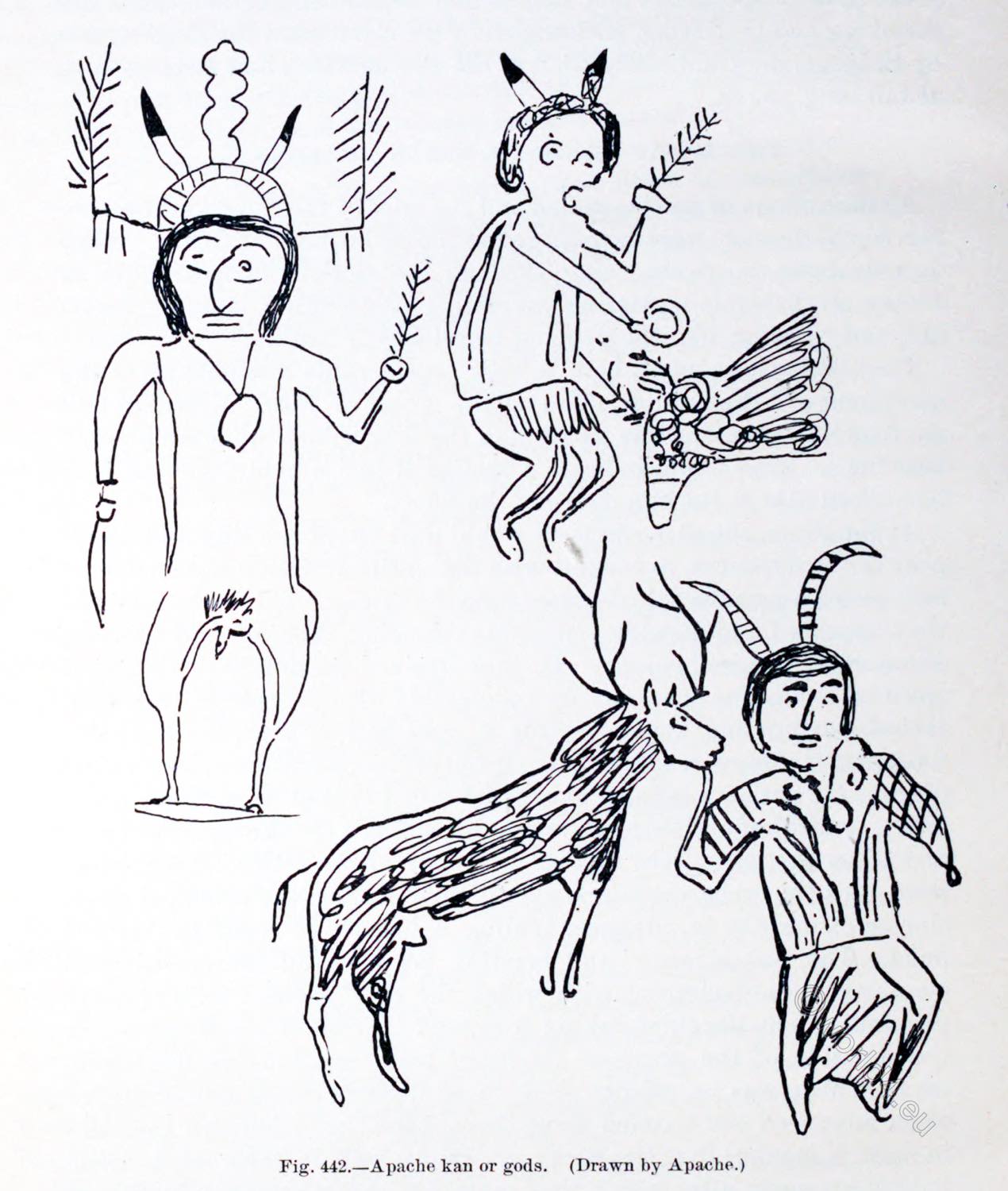
Then the chief, taking his stand in front of the orchestra on the east side of the grove or cluster of trees, awaited the final ceremony, which was as follows: The three dancers in file and in proper order advanced and receded three times; then they embraced the chief in such a manner that the sticks or wands held in their hands came behind his neck, after which they mumbled and muttered a jumble of sounds which I call not reproduce, but which sounded for all the world like the chant of the “hooter” at the Zuni Feast of Fire. They then pranced or danced through the grove three times. This was repeated for each point of the compass, the chief medicine-man, with the orchestra, taking a position successively on the east, south, west, and north and the three dancers advancing, receding, and embracing as at first.
This terminated the “medicine” ceremonies of the evening, the glad shouts of the Apache testifying that the incantations of their spiritual leaders or their necromancy, whichever it was, promised a suceessful campaign. These dancers were, I believe, dressed up to represent their gods or kan, but not content with representing them aspired to be mistaken for them.
Source: The medicine-men of the Apache by John Gregory Bourke. Smithsonian Institution. Bureau of American Ethnology. Annual report, ninth. Washington 1892. Lithographed by Sackett & Wilhelms. Printed in New York: c. 1897.
Related
Discover more from World4 Costume Culture History
Subscribe to get the latest posts sent to your email.

